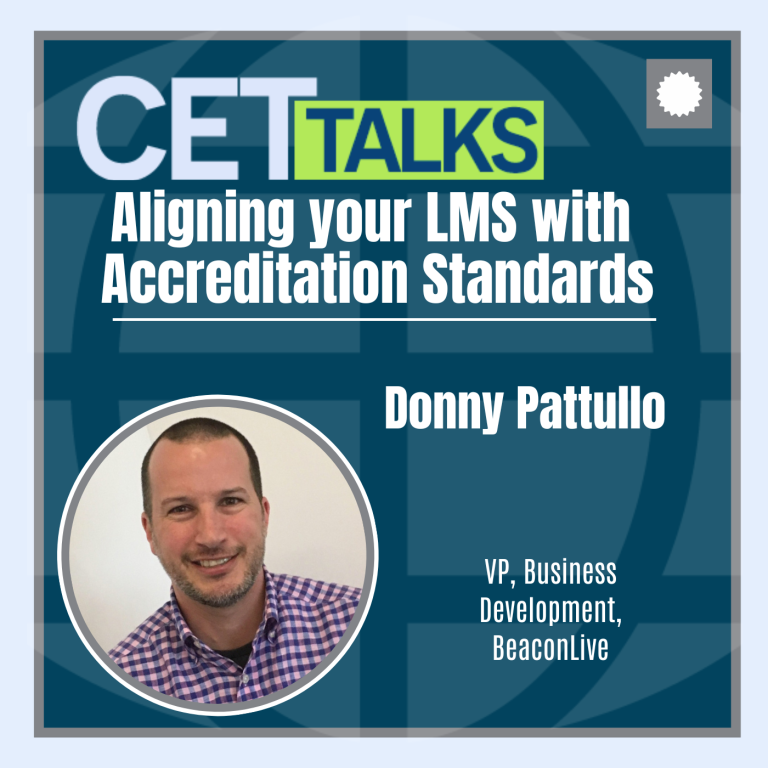Episode 16
.
CET Talks: Accreditation, Learning and Leadership
Episode 16
MAY 15 2024 . 24 MINUTES
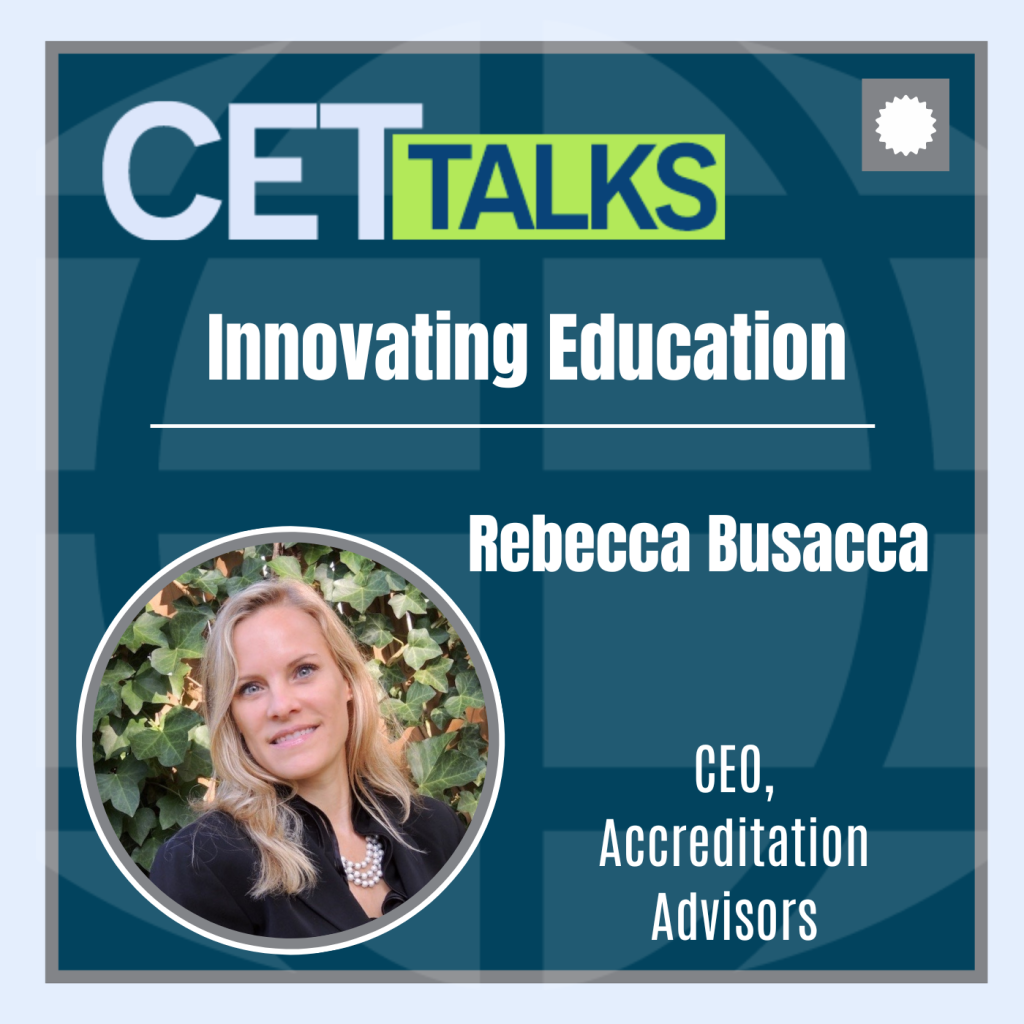
Innovating Education: Navigating Accreditation for Short-Term Training
In a landscape dominated by short-term and noncredit programs, today’s accreditation systems face new challenges and ripe opportunities. As the Chief Executive Officer of Accreditation Advisors, Rebecca Busacca is at the forefront of the conversation, reimagining the possibilities of a more inclusive, flexible, and quality-driven accreditation journey. Join the co-hosts of CET Talks as we explore the future direction of noncredit education and accreditation, offering insights into how institutions, educators, and students alike can navigate and thrive in this ever-shifting landscape.
Listen to the Podcast
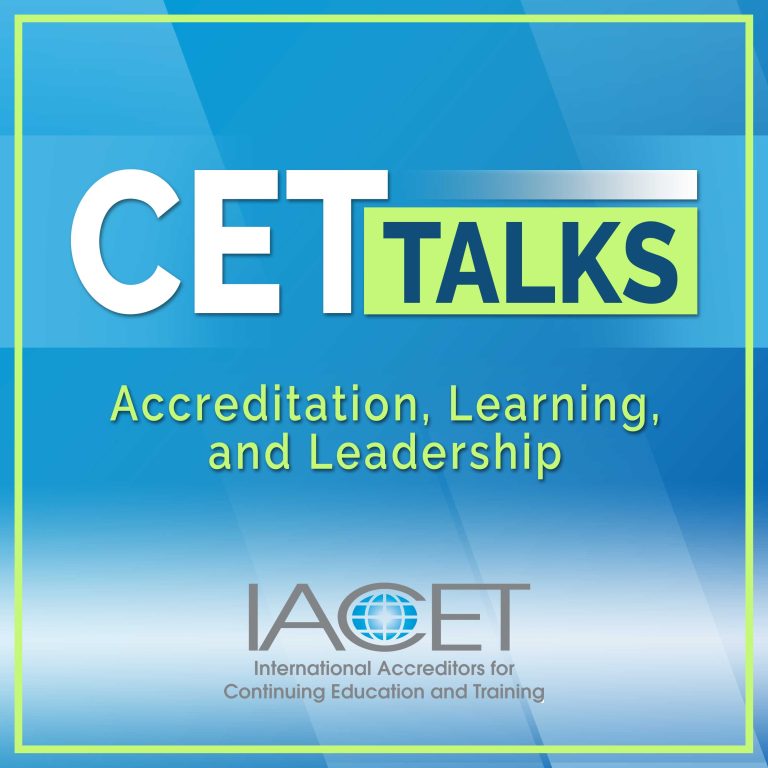
Welcome to CET Talks, the International Accreditors for Continuing Education and Training’s podcast, where we convene thought leaders in the continuing education and training ecosystem to share ideas, research, best practices, and experiences that promote the creation of a world that learns better. Your hosts are Randy Bowman, Interim President and CEO of IACET, and certified corporate wellness specialist Mike Veny.
In a landscape dominated by short-term and noncredit programs, today’s accreditation systems face new challenges and ripe opportunities. As the Chief Executive Officer of Accreditation Advisors, Rebecca Busacca is at the forefront of the conversation, reimagining the possibilities of a more inclusive, flexible, and quality-driven accreditation journey. Join the co-hosts of CET Talks as we explore the future direction of noncredit education and accreditation, offering insights into how institutions, educators, and students alike can navigate and thrive in this ever-shifting landscape.

Transcription
Host: Welcome to CET talks, the International Accreditors for Continuing Education and Training’s podcast, where we convene thought leaders in the Continuing Education and Training ecosystem to share ideas, research best practices, and experiences that promote the creation of a world that learns better. Enjoy the episode.
Randy Bowman: Hello, and welcome to CET talks. My name is Randy Bowman. I’m the president and CEO of IACET, and I’m here with my co-host, Mike Veny, a certified corporate wellness specialist and CEO of an IACET-accredited provider. How are you doing today, Mike?
Mike Veny: I am good, Randy. How are you?
Randy Bowman: Better than ever.
Mike Veny: Okay. Just wanted to let you know that one of the things that I am challenged with, besides the many challenges I have with work in my business and running a training company, is we have these accredited courses, but we also have smaller ones that aren’t accredited, and I’m trying to figure out what to do with those.
Randy Bowman: Well, luckily today we have with us, Rebecca Busacca, an accreditation expert, who had been in accreditation over 30 years. She’s going to talk to us about uncovering non-credited programs and exploring their role and limitations in today’s CET ecosystem. We’re glad to have her today with us. Rebecca, how are you doing?
Rebecca Busacca: I’m doing great. Thank you for that lovely introduction. This is my first podcast ever, and I’m excited to talk about this topic because this is the topic of the day. Non-credited training programs, I think, have been on the periphery of higher education for so long, and currently they’ve become the hottest topic in higher education. How do we transition students from non-credit programs into credit programs and enable individuals that are taking short-term training to get the jobs that they desire and/or the credentials that they desire? This topic, I think, is very timely, and I’m happy to share a little bit about my background in accreditation. To start, I have been in this phase for 30 years, believe it or not. I started in November of 1994 at an accrediting agency that threw me out to the wolves and said, “Do visits all over the country.” And I loved it. I got to see every kind of school you could ever imagine and all in, I’ve probably had boots on the ground at like 500 different schools. You learn a lot about what it takes to run an institution. So, I’ve seen many things; I haven’t seen it all. I’m excited to have this chat today about what’s happening in this space and how we can start to acknowledge non-credit training.
Randy Bowman: Wow. I’m really excited about this conversation, Rebecca. To start us off and to level set where we are, can you explain to our listeners what the difference is between a Department of Education recognized accrediting body and a non-DOE recognized accrediting body?
Rebecca Busacca: Sure. Recognized accreditors go through an arduous process with the US Department of Education that takes, on average, between five to six years just to get on board. Mainly, recognized accreditors pursue recognition with the Department of Ed, predominantly to access some form of federal financial aid. Bear in mind that you have to have a federal link to be a recognized accreditor, and that could vary. It could include Department of Ed recognition for Title IV federal aid access. It could include Department of Homeland Security Recognition so that you can issue visas. It can also incorporate Department of Defense, Energy, you name it. But there has to be a federal link associated with the accreditor. So, non-recognized accrediting agencies, simply said, don’t have a need for federal link to operate, provide the training that’s needed, and to connect their employees or students with jobs and opportunities.
Randy Bowman: A lot of the colleges and universities in the higher education space are accredited by who and how are they connected? How does that all play in?
Rebecca Busacca: That’s a great question. There’s about 110 recognized accreditors in this country that predominantly accredit the schools that we know in this nation. The state schools, the nonprofit institutions, and the for-profits are accredited by these 110 accreditors. Within the 110 accreditors, there are about, off the top of my head, maybe 16 that are institutional accreditors, which means that they look at the entire institution. The remaining 70 or 80 odd institutions are either specialized or programmatic accreditors that look at unique programs offered within an institution.
Randy Bowman: So when someone is out there seeking an accrediting body, how do they know what to choose? How do I choose a recognized accrediting body versus a non-recognized accrediting body? And what are the questions I don’t even know to ask if I’m looking for an accrediting body?
Rebecca Busacca: I think the biggest thing with recognized accreditors in this nation is that programs need to be predominantly credit bearing. They can be certificate level offerings, too. If you’re an organization that’s teaching a program and it does not align with the current Carnegie formula, can’t be translated into the credit system, which is generally one hour of instruction is equivalent to a certain number of hours of homework. That’s a credit bearing system. Non-credit bearing institutions generally are unaccredited, and many individuals don’t know that. Our credit side of the house—let’s say I live in Virginia, and we have the Northern Virginia Community College system right around the corner. It’s a huge system. They have an academic side of the house, and then they have a workforce side of the house. The academic side of the house is the credit bearing side of the house. The workforce side of the house is doing a lot of the heavy lifting, pushing out short-term, non-credit training. But those programs are unaccredited mainly because the accrediting agencies within their scope do not include non-credit programs. That’s written within the Higher Education Act, too. So, it’s not just that accreditors don’t choose to accredit non-credit programs; it’s simply because their scope of recognition does not include it. If I’m a school and I’m trying to decide whether to go to a recognized accreditor or a non-recognized accreditor, I think the questions you should ask, number one is what do I get out of this? If I go through this arduous process of accreditation that could take me years, will I get access to federal financial aid? Do I even need access to federal financial aid to solicit students to do my job, to get them trained and aligned with the workforce? I also think they need to consider if they want to enroll international students. Bear in mind, you have to be accredited by a recognized accreditor to have visa granting authority. If you want to expand and have international students come and go within your institution, you’re going to need a recognized accreditor. Similarly, there are many states in this country that require that you be accredited to be a state eligible training provider, which means it would enable you to access Workforce Innovation Act funding and various other state funded programs. So, if you want to access state money to train individuals or even train state people, you may need to be accredited in accordance with the state’s laws. I think another big area that has to be considered is does your state or your industry require that you have a recognized credential? Some states require that you graduate from an accredited institution in order to sit for a certification or a licensure exam. If that’s required, you’re probably going to have to go down the recognized path. But on the other side of the coin, if you have a training program that’s aligned with industry expectations, you may not need to have an accredited program to qualify to sit for those tests. Off the top of my head, I think those are some of the key areas that schools should consider before they even kick the can.
Mike Veny: Rebecca, let’s just say that I am part of an institution that has some non-credit programs, and I want to get them accredited. How can I leverage data and analytics to support that process? And what are some specific metrics or indicators that should be prioritized to demonstrate compliance and quality?
Rebecca Busacca: Well, that’s a great question too. I have to tell you, I’m a little bit of a data nerd. I think all data should be used for every reason known to man, but not everybody agrees with me. The current accreditation landscape is not using a lot of data in the way that I’m envisioning. To answer your question, how can we leverage data? First and foremost today, if you’re an accredited institution, it can take between six months to three years to get a new program approved, believe it or not. Let’s say I’m teaching a program in some advanced level of robotics, and I want to get this program accredited. I want to help an employer down the block get a hundred new employees trained and upskilled. First, I have to apply to the state to get the state to approve it. Then, I have to apply to the accreditor to get them to approve it, and I have to apply to the feds to get them to approve it. That process can take about three years. A big area where I think data can be leveraged is to help institutions innovate, offer more innovative programs, programs that are rapidly modified to align with employer expectations. We cannot sit and wait years upon years to get new programs going, especially today in our technological space. I learned one thing about Chat GPT yesterday and the next day it’s so different. We have to stay on top of this stuff, and I think data can help us do that. I also think data can be leveraged to track student learning outcomes. You know, there are a number of metrics that are required to be tracked within an accredited institution, but how do you really gauge what should be tracked and how it should be tracked? And how do you pull in outside data, like employer job descriptions, job postings, and high demand industry data, to ascertain whether or not a student actually got a good job and that they’re helping build our workforce in the economic model in this country?
Mike Veny: What hurdles exist to gathering that data? For one, you said this three-to-six-year process is too long. What other hurdles exist for institutions who want to get that data and put it together in gathering it?
Rebecca Busacca: I think the biggest hurdle is that it’s really expensive today to get the data, to be able to study the data, and to leverage the data to benefit your organization. Let’s say I want to teach a welding program. First and foremost, I need to study the market. How am I going to go about studying the market? I might pull some BLS data. I might go and look at some O-net data, but that data’s generally updated every 10 years. What I really need to look at is how many employers are hiring in the area and what are they looking for in the employee? Collecting all of that employer data and assessing it in a comprehensive way, and then tying it back to the program that you intend to teach is complex. It’s expensive, it’s very time-consuming. And schools, I don’t think, have the money to build the technological platforms to pull in all of this data and effectively assess it and use it to their advantage.
Randy Bowman: You have some really innovative ideas on creating a new age accreditation model to address these shortcomings. Can you talk to us about what your dream is, and what steps you are taking at Accreditation Advisors to realize this vision?
Rebecca Busacca: Well, I have a dream, and you know, some people say I’m trying to boil the ocean, but I don’t agree. Before I started doing this work of attempting to build a new programmatic accreditor for workforce development, I worked for an ed tech firm that was building comprehensive learner records, or learner and employment records that were pulling data from state longitudinal data systems. They were pulling from the Census Bureau, they were pulling from the IRS, they were looking at data points within a learning management system and an SIS system. What I’m envisioning is building an accreditation information hub that looks at all of these data points, and that consistently pulls the data into the system and pushes it out at an institution. To step back again to Mike’s question about what some of the key areas are when you’re building a new program, and you’re out assessing all of these data points—wouldn’t it be nice if I didn’t have to do all of that heavy lifting, if I said, “Hey, I want to teach a welding program.” I enter the welding program and the SIP code, which is a federal code for programs, into an accreditation information hub. It spits out a whole bunch of data that said, “Oh, you probably shouldn’t teach this program in this area because there’s 20 other schools that are teaching it. The market’s fully saturated. There’s only two employers that are hiring in this region,” and a whole slew of other data points. So, this accreditation information hub would push this data at me instead of pulling it. Accreditation models today hold data out of schools. They make you write a 300-page narrative, attach 10,000 exhibits that are PDFs or Word documents, and they go into a data file sharing system. What can a data file sharing system do for you? Not a whole lot. It can share data, but it can’t study data. This accreditation information hub that we’re attempting to build, we’ll pull in all of these disparate data parts and begin to do the heavy lifting.
Mike Veny: Could you help our listeners understand the significance of accreditation for non-credit programs? Explain why I would invest time and money into this, especially considering the increased demand for short-term training options.
Rebecca Busacca: Well, I think I sort of answered it. I think the biggest “why” today is whether or not you want to access federal financial aid. Let’s just be honest. There are three bills, maybe four, on Capitol Hill today for short term Pell, and short-term Pell is for 150 clock hour program that would be offered over a period, minimally, of eight weeks. These programs today, nobody cares about them. They’re completely unaccredited. If short-term Pell passes, which apparently there’s some likelihood it will pass because it’s bipartisan, then who’s going to accredit these short-term training programs, and who knows how to accredit them? If I’m a school and I’m on the fence, Mike, I want to know if I’m going to get federal financial aid. And if I do get federal financial aid, how am I going to manage my federal financial aid? It’s not easy, by any stretch of the imagination. I think that’s the first thing. The second thing is the industry certification and credentialing. A lot of employers today have written policies and procedures that mandate, in order to hire you, you have to have completed an accredited training program from a higher education institution, a certificate-level institution. Until they remove those provisions from their hiring stipulations, we’re going to still need recognized accreditation where those policies don’t exist. Non-recognized accreditation is equally powerful in its own right. Then lastly, the certification and licensure piece. States are notorious for mandating that you cannot sit for the requisite certification exams to work in an allied health industry, for instance, or be a pharmacist or work in some of the heavily regulated industries, without having completed an accredited training program. That’s the way the regs are written. I think there’s a movement within this country, I call it the evolution revolution. Students are revolting. They’re like, “Oh my gosh, I went to an accredited institution. Was it worth it? I paid a lot of money for that. Could I go to a shorter training program, accomplish my goals in a truncated period of time, have no debt, and get a really good job?”
Randy Bowman: At IACET, we’re trying to create a world that learns better. As an expert in accreditation, what does a world that learns better look like to you?
Rebecca Busacca: I love that question, and what a positive note to end on. I think today, individuals are being asked to succeed in a new business world, but they’re being forced to use yesteryear’s technologies and processes. The result of giving them recognized credentials, albeit from IACET or another accrediting body, is intended to set them up to succeed and live a happier, healthier life. I think the more we open our minds to lifelong learning, a lot of the anger that’s present today begins to fade. I think politics return to being the representation of the people. In essence, we all live happily ever after.
Mike Veny: Thank you, Rebecca, for such an amazing interview. I wish we could keep going; I have so many more questions for you. I wanted to share one of my takeaways. It’s very important for the listeners out there to understand that sometimes we put these non-credited programs into one box and the accredited programs into the other box. I think here today, we’re seeing how we can get closer to finding a standard for all that’s a high standard. It’s important to think about, even if you’re not there yet, even if you decide not to accredit in a non-credited program right now. That was my big takeaway. What about you, Randy?
Randy Bowman: I really enjoyed learning a whole lot more about the differences between recognized accrediting bodies and non-recognized accrediting bodies. I don’t think there’s a lot of knowledge out there about that distinction. It was great to have someone who could come in and clearly articulate those differences and get that knowledge out and about in the environment. Thank you so much, Rebecca.
Rebecca Busacca: Yeah, thank you for having me. I really appreciated the opportunity. Great to get to know you.
Randy Bowman: As we wrap up today’s discussion on accrediting non-credit programs in higher institutions, we’d love to hear from you guys, from you, our listeners. How do you believe technological advancements such as generative AI, simulations, chat bots, et cetera, are going to change your organization’s accreditation or training journey? Please share your experiences and insights on our LinkedIn page. Your stories can provide invaluable lessons and inspiration for others, navigating the similar paths. As always, don’t forget to submit your topic ideas, suggestions for guests, and other feedback on the CET Talks podcast page of the IACET website. We certainly hope you’ll subscribe to this podcast on your favorite podcast platform, so you don’t miss any of these exciting episodes. Thank you so much for joining us today.
Host: You’ve been listening to CET talks, the official podcast of IACET. Don’t forget to subscribe to the podcast on Spotify, Apple Podcast, or wherever you listen to podcast. To learn more about IACET visit iacet.org. That’s I-A-C-E-T.org. Thanks for listening, and we’ll be back soon with a new episode.
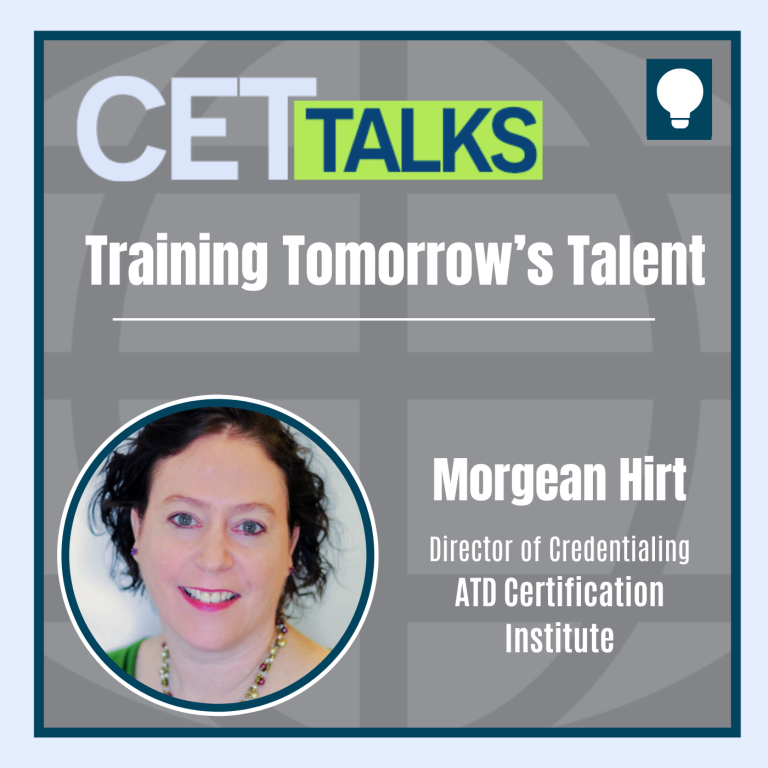
Episode 31: Training Tomorrow’s Talent: Exploring Certification, Standards, and Impact with ATD’s Certification Institute
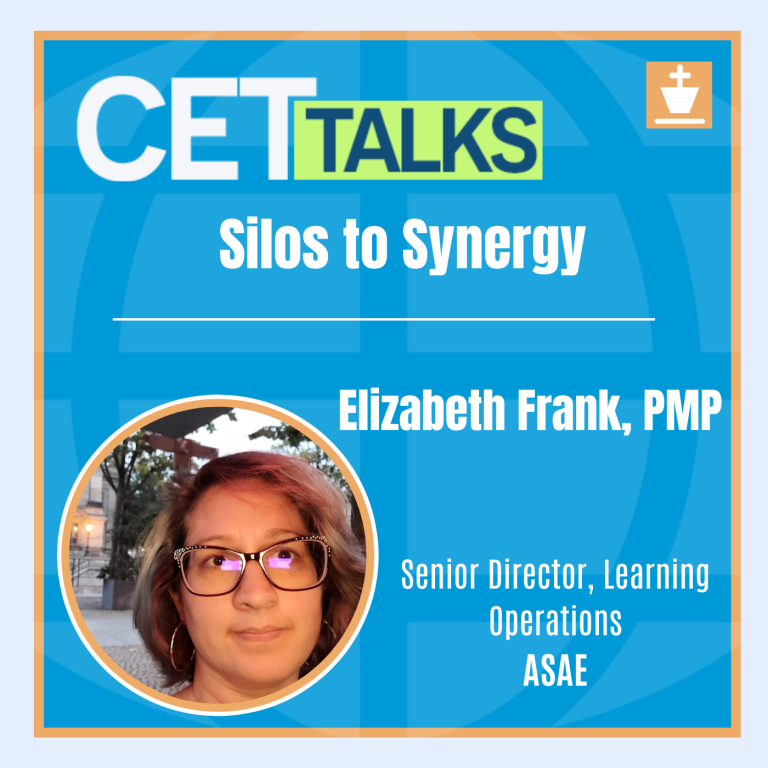
Episode 30: Silos to Synergy: Holistic Approaches to Creating Collaborative Learning

Episode 29: Credentials in Crisis: Challenges and Opportunities in Modern Education Recognition
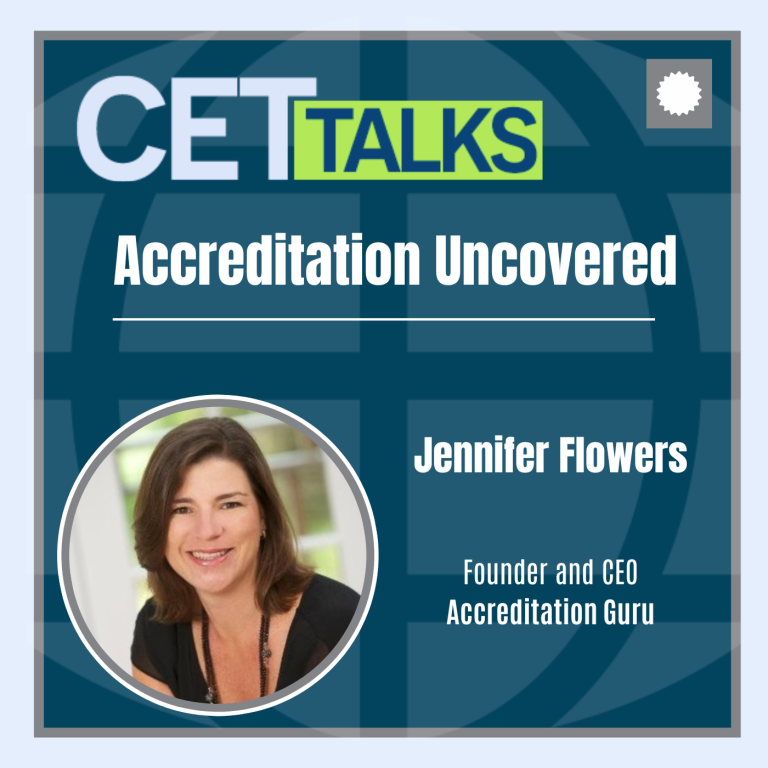
Episode 28: Accreditation Uncovered: Essential Insights from an Industry Leader

Episode 27: Two Truths with a Lie: Managing the Myths of Modern-Day Learning
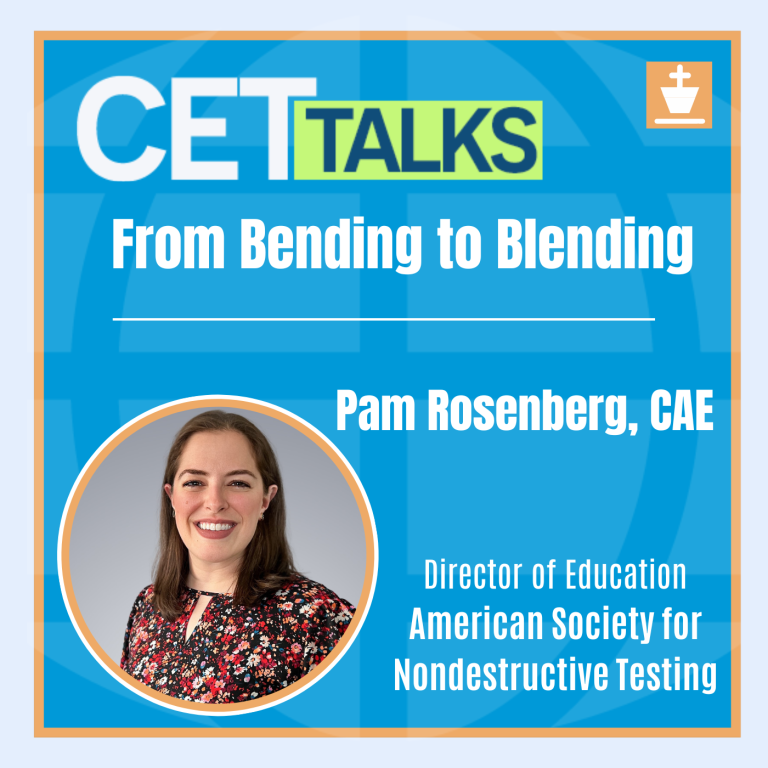
Episode 26: From Bending to Blending: Best Practices in Integrating Externally-Created Content
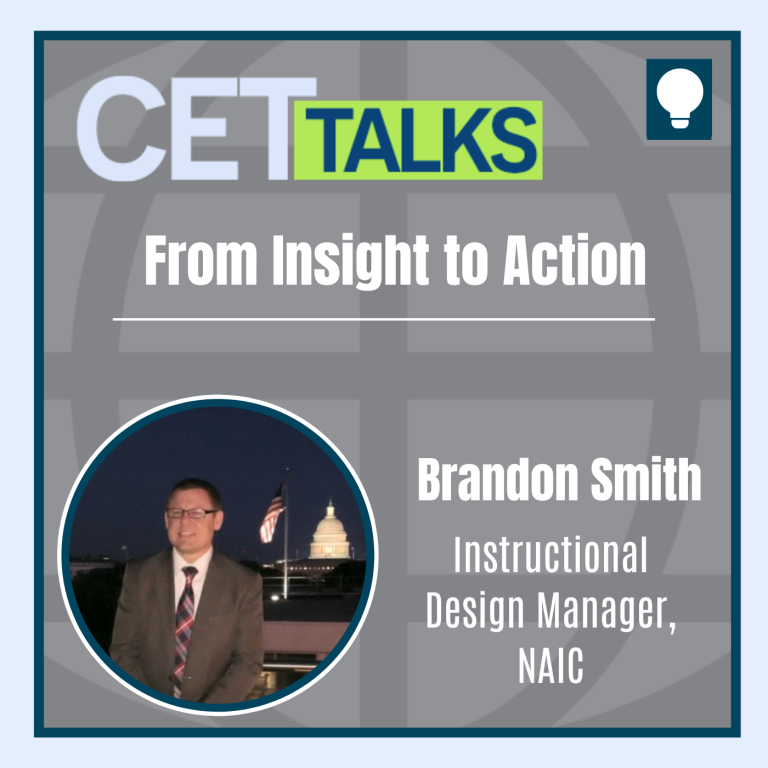
Episode 25: From Insight to Action: Charting the Career Path of a SME-turned-ISD

Episode 24: Cultivating Careers: The Power of Employee Engagement for Organizational Success

Episode 23: Igniting Imagination: Crafting Creativity in Training Environments
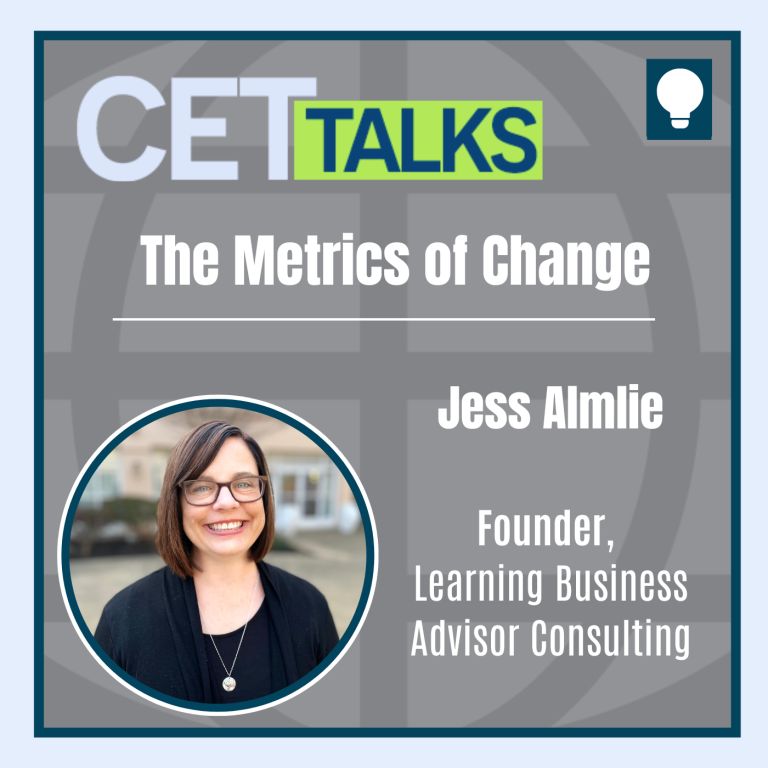
Episode 22: The Metrics of Change: Navigating Purposeful Measurement in L&D
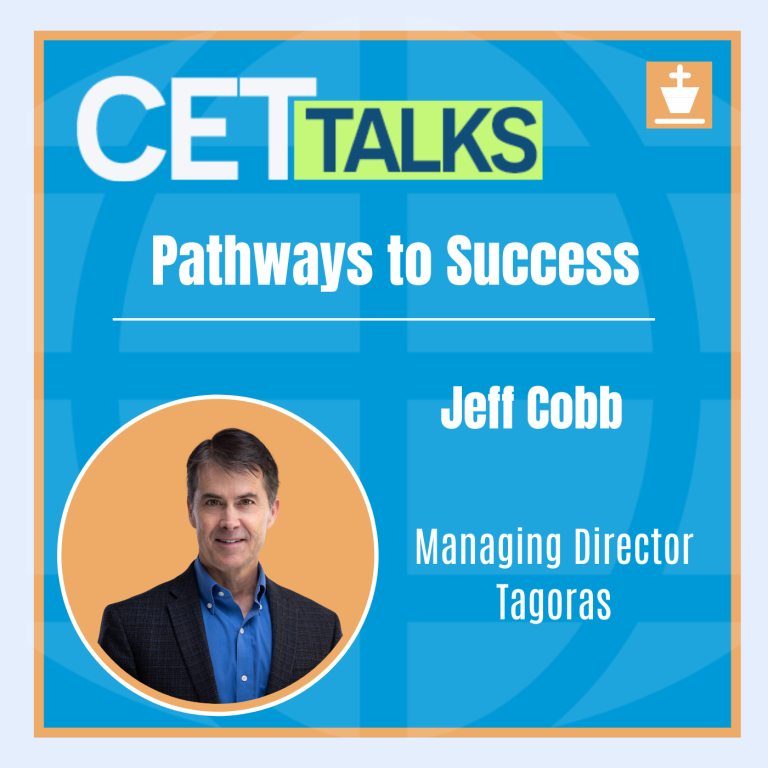
Episode 21: Pathways to Success: The Value of Lifelong Learning through Digital Credentials
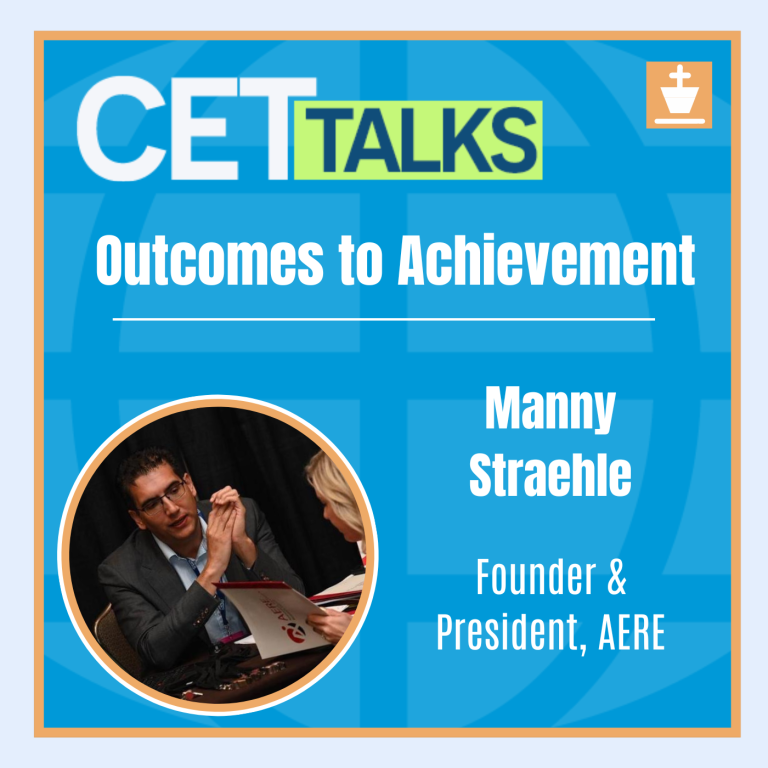
Episode 20: Outcomes to Achievement: Crafting Tomorrow’s Workforce Through Competency Models

Episode 19: Chatting with the Future: Enhancing AI Output Through Prompt Engineering

Episode 18: On the Inclusive Frontier: Harnessing Neurodivergence in Modern Training

Episode 17: Designing with Purpose: Strategies for Accessible e-Learning Development
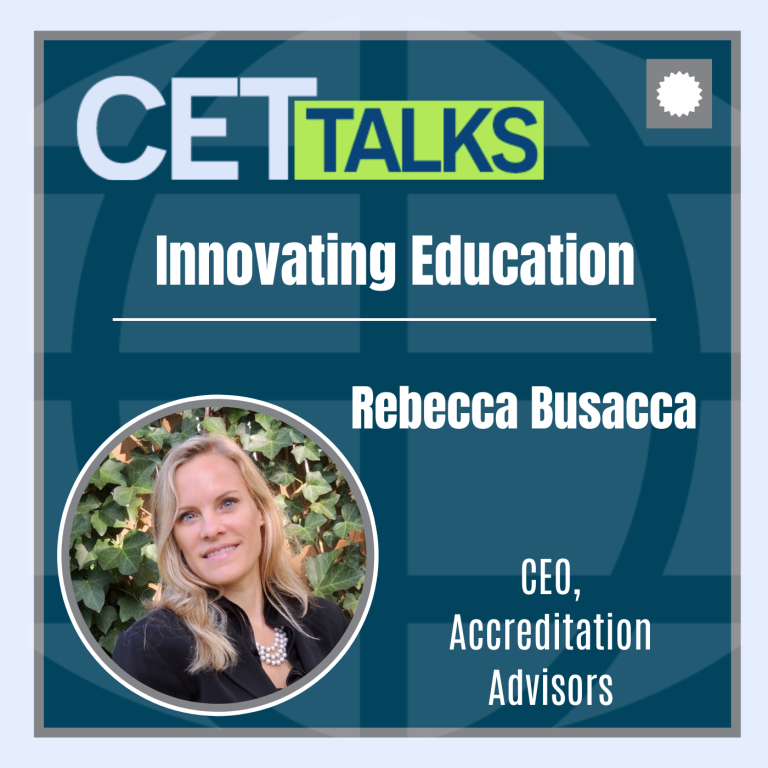
Episode 16: Innovating Education: Navigating Accreditation for Short-Term Training
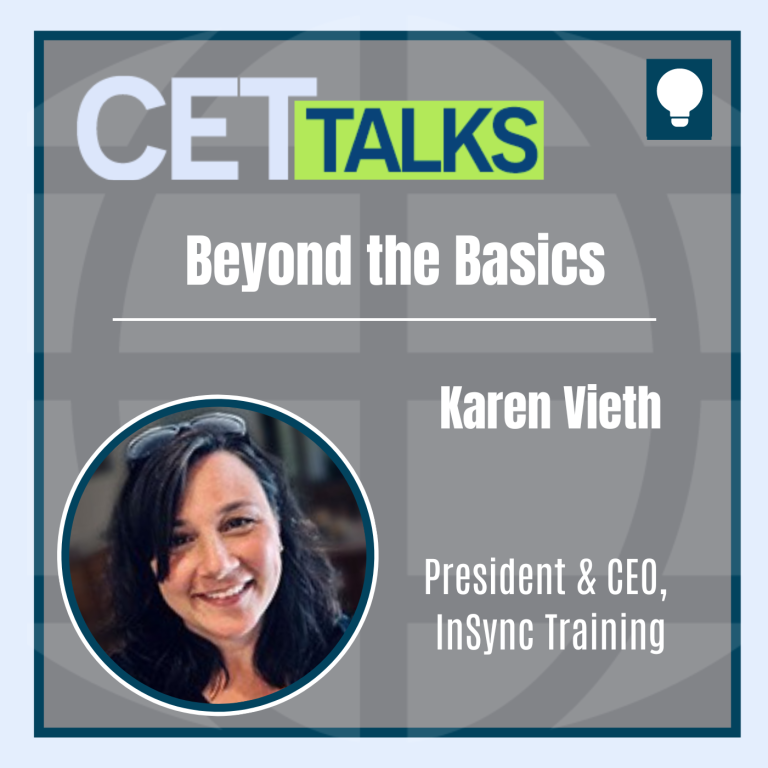
Episode 15: Beyond the Basics: Elevating Virtual Training through Expert Facilitation
